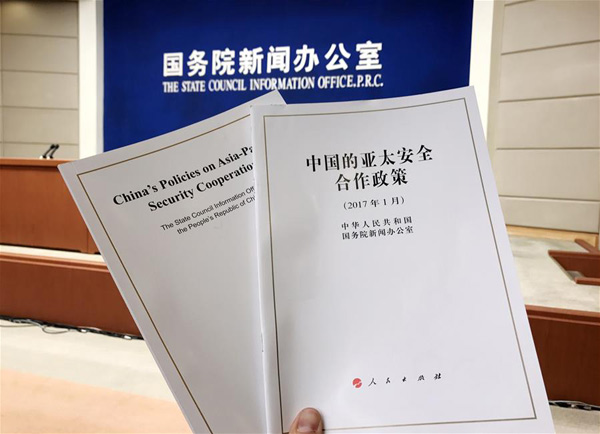Feb 08, 2017
The United States needs to brush up on its history about the South China Sea, as World War Two-related agreements mandated that all Chinese territories taken by Japan had to be returned to China, Chinese Foreign Minister Wang Yi said in Australia.
Richard Javad Heydarian, Professorial Chairholder in Geopolitics, Polytechnic University of the Philippines
Feb 06, 2017
Duterte, whom some have dubbed as the “Trump of the East”, made it clear that he feels a sense of personal affinity with the new American leader, whom he has described as a kindred spirit, a fellow strongman and anti-establishment populist. There are, of course, legitimate concerns about the possibility of things spiraling out of control if and when mercurial and larger-than-life figures like Duterte and Trump collide. For now, however, Manila is optimistic about a diplomatic reset with its oldest friend, America.

Beth Smits, PhD candidate, Paul H. Nitze School of Advanced International Studies (SAIS), Johns Hopkins University
Feb 06, 2017
In January 2017, China released a document that helps interpret the policy goals of President Xi Jinping, particularly his speech in May 2014 where he promoted, “New Asian security concept for new progress in security cooperation.” The Trump administration should take note of three points in the new document: China’s country relations, the South China Sea, and the conspicuous absence of certain information, as each will have a critical role in U.S.-China relations.
Yao Yunzhu, Retired Major General, Chinese People’s Liberation Army
Jan 27, 2017
If a military blockade is implemented to deny China the access to the South China Sea islands it occupies, it means an invasion against Chinese territory, retired Chinese major general Yao Yunzhu argues.
Zhou Bo, Senior Fellow, Center for International Security and Strategy, Tsinghua University
Jan 25, 2017
Like the confidence-building measures that have maintained peace and stability along the disputed China-India border, a code of conduct agreement with ASEAN will smooth relations and invite new cooperation — without regard to the Philippines’ improper and unilateral appeal for outside arbitration.
Jan 24, 2017
The new U.S. administration of President Donald Trump vowed on Monday the United States would prevent China from taking over territory in international waters in the South China Sea, something Chinese state media has warned would require Washington to "wage war."
Jan 11, 2017
A Chinese H-6 strategic bomber flew around the Spratly Islands at the weekend in a new show of force in the contested South China Sea, a U.S. official said on Tuesday.
Jared McKinney, PhD student, S. Rajaratnam School of International Studies
Jan 05, 2017
Chinese sources have attempted to explain the seizure of a U.S. Unmanned Underwater Vehicle (UUV) with reference to maritime safety or protests over U.S. military reconnaissance in and around Chinese waters. China seized the drone to send a signal to President-elect Donald Trump that China wasn’t going to play around with any threats to the One China Principle, which Trump threatened by calling Taiwan President Tsai Ing-wen. However, there is no need for abrupt action right now that alienates president-elect Trump and his advisors. China’s economic and global clout gives it the influence it needs to preserve its “core” interests in international society, and China’s true power doesn’t derive from its ability to pull a U.S. UUV out of the water; it comes from its regional and global economic influence.
Jan 03, 2017
China's sole aircraft carrier conducted drills in the South China Sea, the navy said, days after neighboring Taiwan said the carrier and accompanying ships had passed 90 nautical miles south of the island amid renewed tension between the two sides.
AP, The Associated Press
Dec 30, 2016
The United States says China has the right to sail in international waters after a Chinese aircraft carrier cruised past Taiwan and into the contested South China Sea.